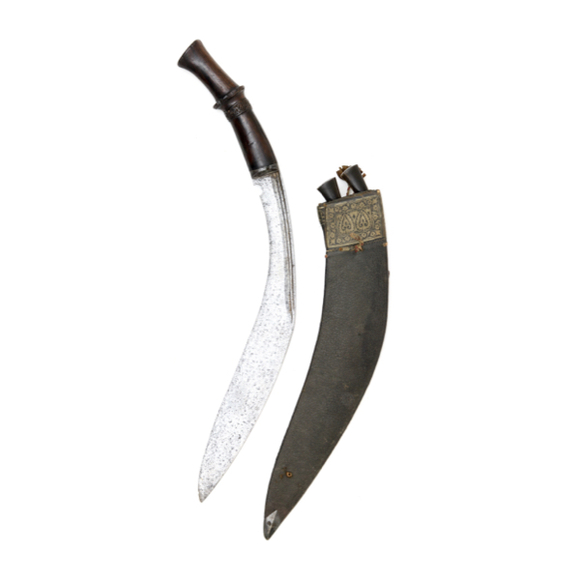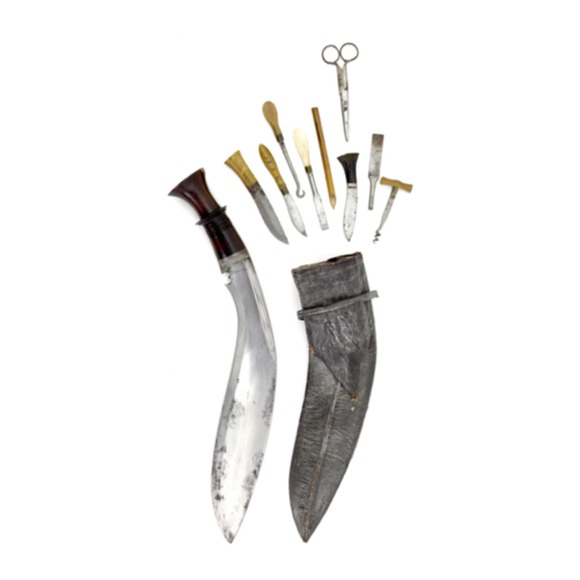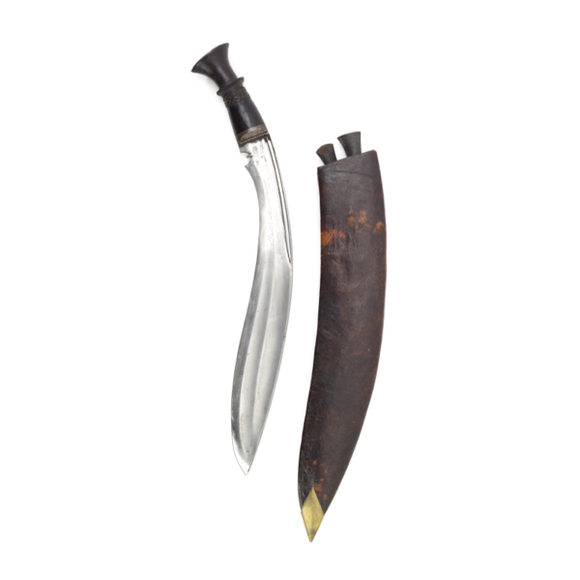Russet iron, one-piece construction with decorative grooves.

80.3 cm
68.5 cm
base 5.5 mm
(ahead of brass sleeve)
middle 4.5 mm
near tip 3 mm
base 34.5 mm
(ahead of brass sleeve)
middle 32.5 mm
near tip 31.5 mm
674 grams
22.5 cm from top of hilt.
Yi (a.k.a Nuosuo or Lolo)
Southwest China.
Iron, steel, brass, wood, lacquer, silver, hide.
Probably 19th century.
From a Beijing private collection, 2016. Since then in Dutch private collections.
Introduction
The Yi or Nuosuo people are known as Lolo in early Western ethnographic writings. They are an ethnic minority that originally lived in the mountain areas of Yunnan, Sichuan, Guizhou, and Guangxi. There are also sizeable Yi communities in Vietnam and Thailand. They have their own language, related to Burmese, and their own script.
In the arms and armor community the Yi are mostly known for their black and red lacquered hide armors in the style of archaic Chinese armors. Such armors were probably produced well into the 19th century, and are seen worn into the early 20th century. The Metropolitan Museum in New York has a wonderful example that is carbon dated to the Dali kingdom of the 12th-13th century, and it is remarkably similar to the examples used in ceremonies some 800 years later. Few are ever carbon dated, but others too may be a lot older than we might think.
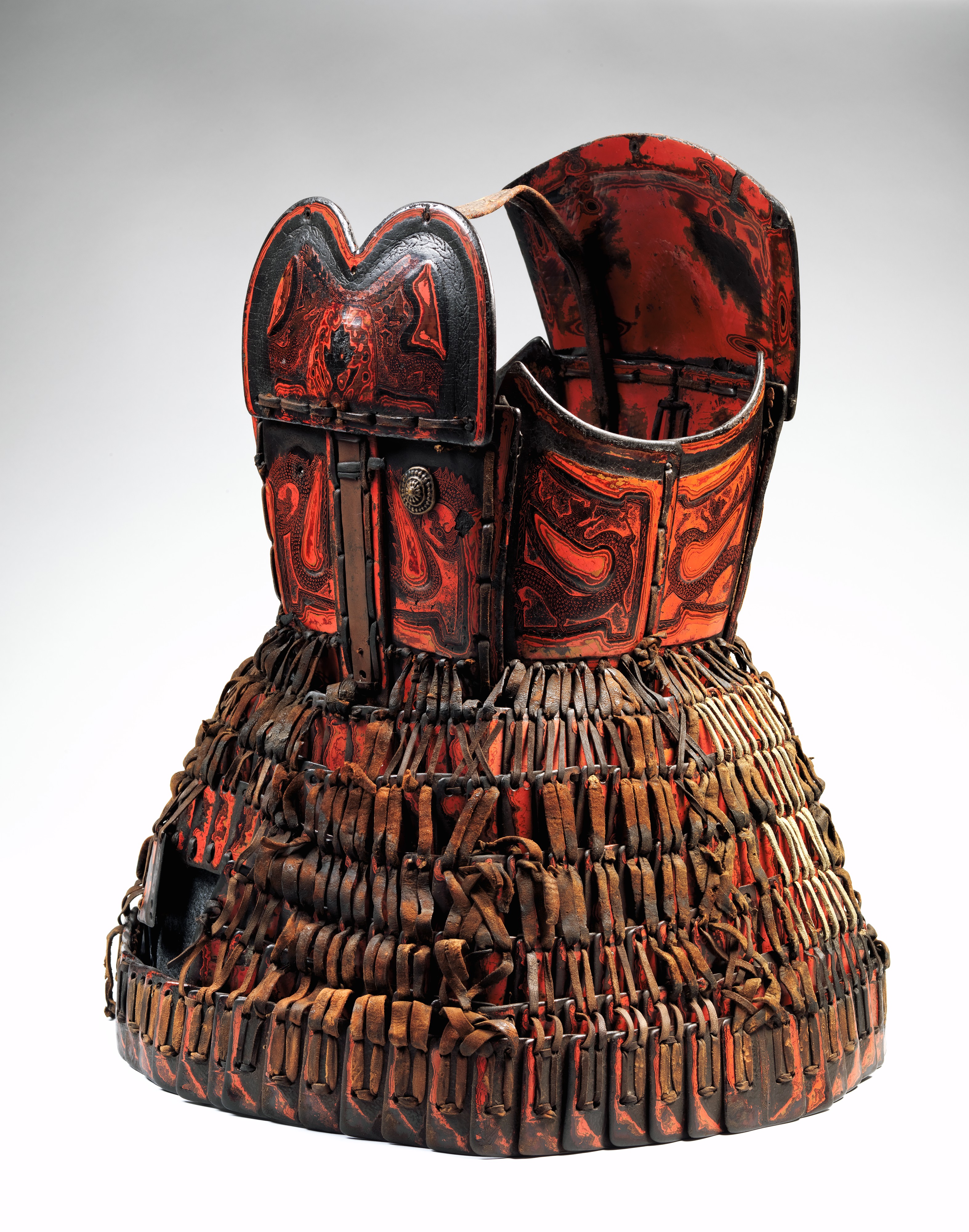
The Metropolitan Museum Yi armor, carbon dated to the 12th-13th century.
Similar armors have been worn by the Yi up until the early 20th century.
Metropolitan Museum accession number 2014.592.
There are Chinese collectors of Yi arms and armor who also focus on swords, but in the western world Yi swords have gotten a disproportionately low amount of attention compared to the iconic armors. Swords of the Yi people are very rarely found in collections outside of China, and not many collectors would even recognize them. Here I present a nice and characteristic example of its type.
Also see:
A Chinese language article on Yi arms and armor
Description
A nice and very rare example of a zhibeidao of the yi people. The blade resembles those made in Tibet in both form and construction, as in: straight, single-edged with oblique tip, of so-called "hairpin forging" with alternating layers of carbon-rich "male iron" and low carbon "female iron". It is probably a Tibetan import, but Yunnan has long been a production center for swords of all kinds, and it may have been producing such blades for a Tibetan market as well.1 In any case, blades of this type are common on Yi swords. The brass collar at the base is a feature that is peculiar to Yi swords.
The blade has some irregular notches on the spine near the tip, seemingly caused by hard impact. Many Yi swords in Chinese collections have one or several of these. Theories are abundant, like a persistent story that this is how the Yi would mark human kills, but actual evidence for this is absent. They do seem purposeful, and the occurrence is far from incidental.
Unlike the blade, the hilt borrows nothing from Tibetan sword design. Yi swords typically have no guard, because they always had a left arm protector that served as a shield. Yi hilts usually taper from the base of the blade to a thinner section near the pommel, and this one is no exception. It is made of dark wood, lacquered black and decorated with bands of silver that are held in place with copper nails. The pommel is a characteristic disc pommel seen on many Yi swords. On the back is a local interpretation of a stylized Chinese coin motif, which is very common on minority weapons from Yunnan.
Yi swords with these large silver clad hilts and pommels are fairly rare, the norm being somewhat smaller pommels made of bone, antler or hardwood. This leads me to believe the silver-clad ones are probably worn by people of a somewhat higher status.
The scabbard is a simple wooden construction with black painted hide wound around it, and sown on one side. Hide was used with the hairs still present, as seen through the gaps of the sewing.
Comparable examples
Comparable examples in well-recorded collections in the Western world are few. The Musée du Quai Branly has an example that was donated to the museum in 1948. Accession number 71.1948.26.11.1-2.
Condition
Comes with the usual age related scratches and dents. Two narrow silver bands on the handle are missing. Some pitting to the blade and loss of lacquer on the scabbard. See photos.
Conclusion
Yi swords are very rare on the market outside of China, and this is a better than average example of their kind, probably made for someone of importance.
NOTES
1. Also see: An unusual zhibeidao with spectacular blade sold here earlier.

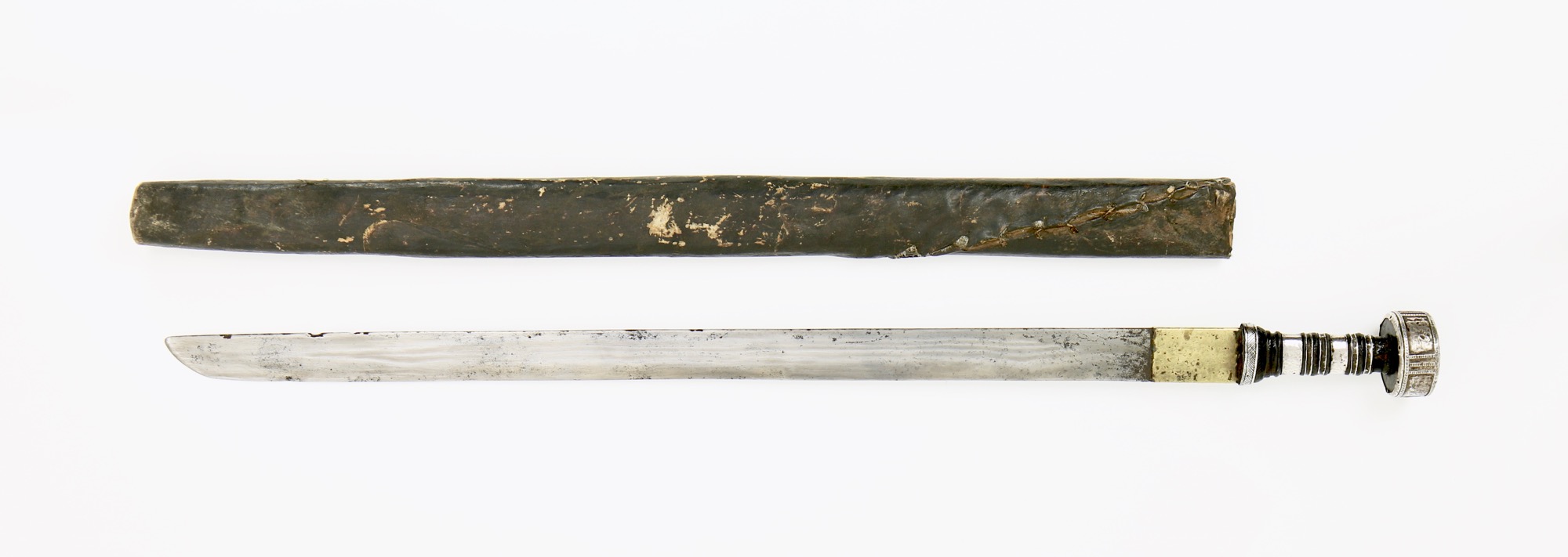


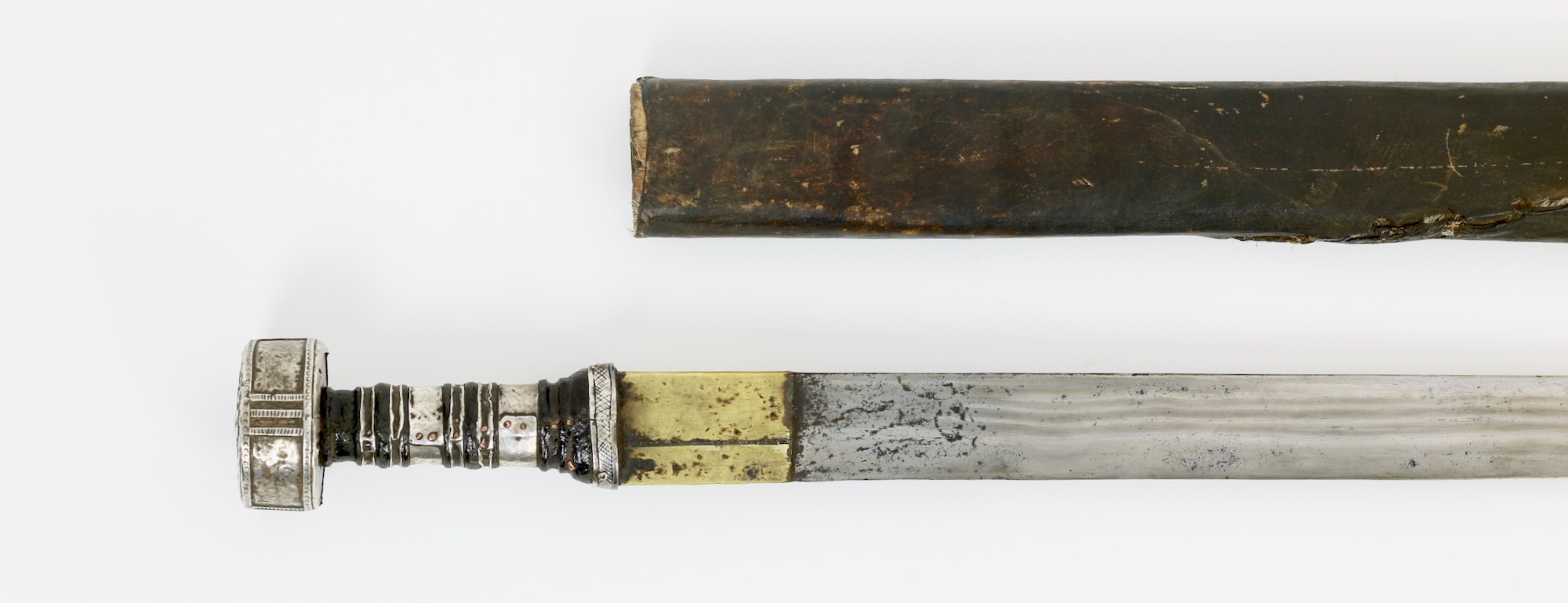
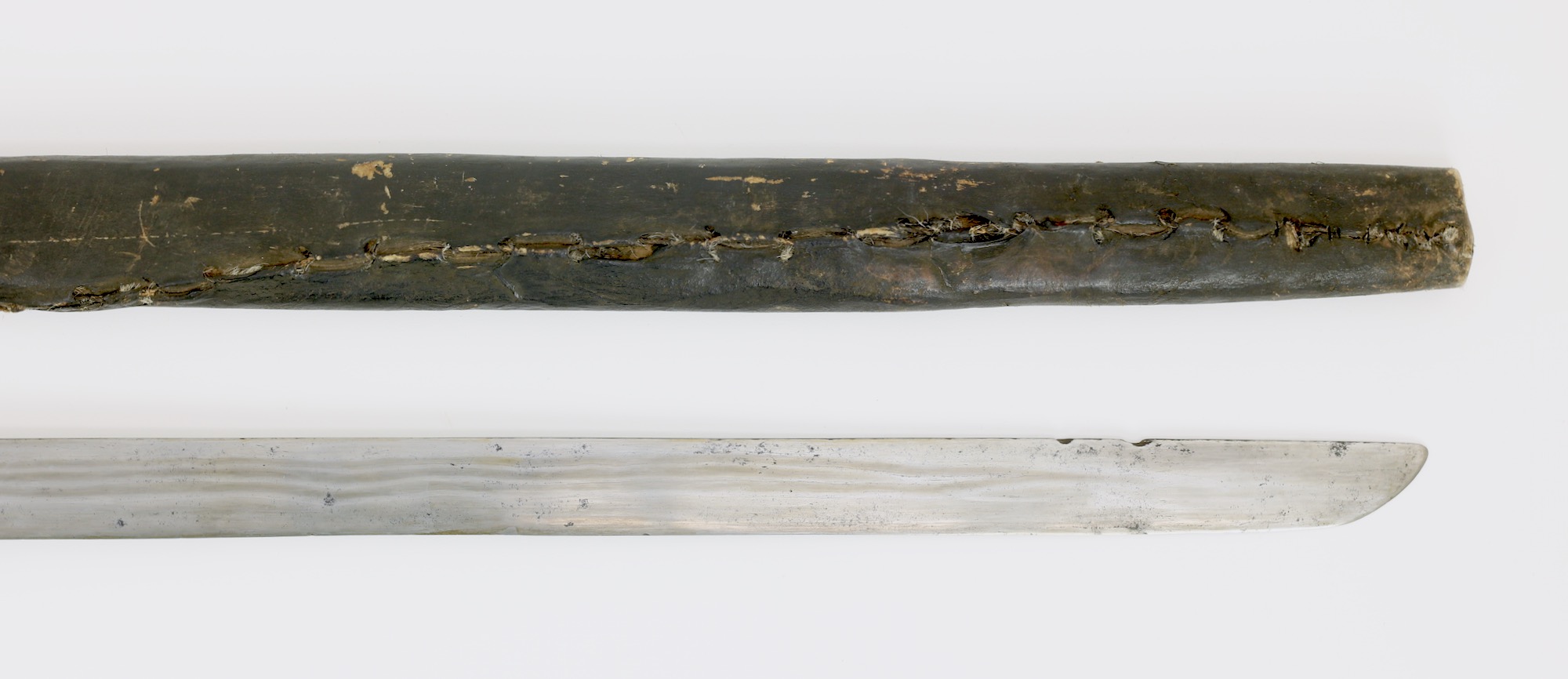
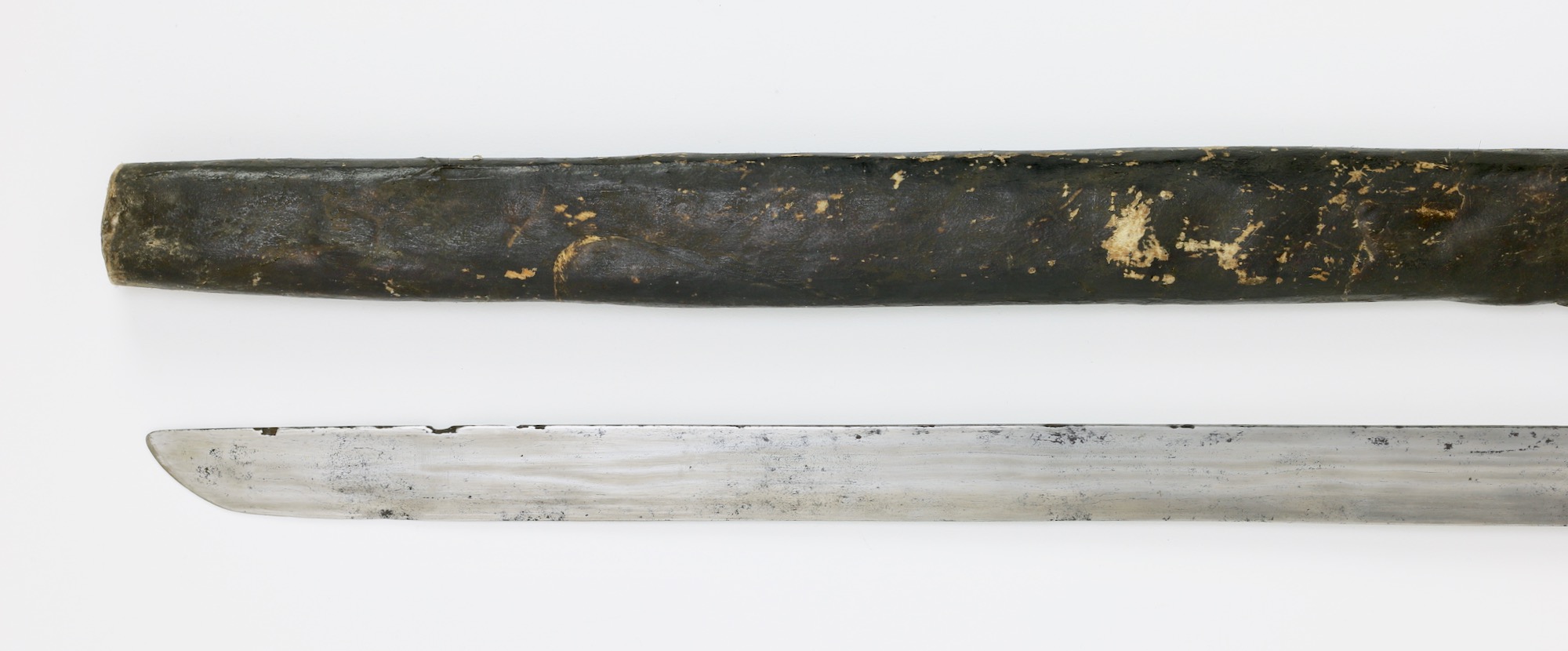
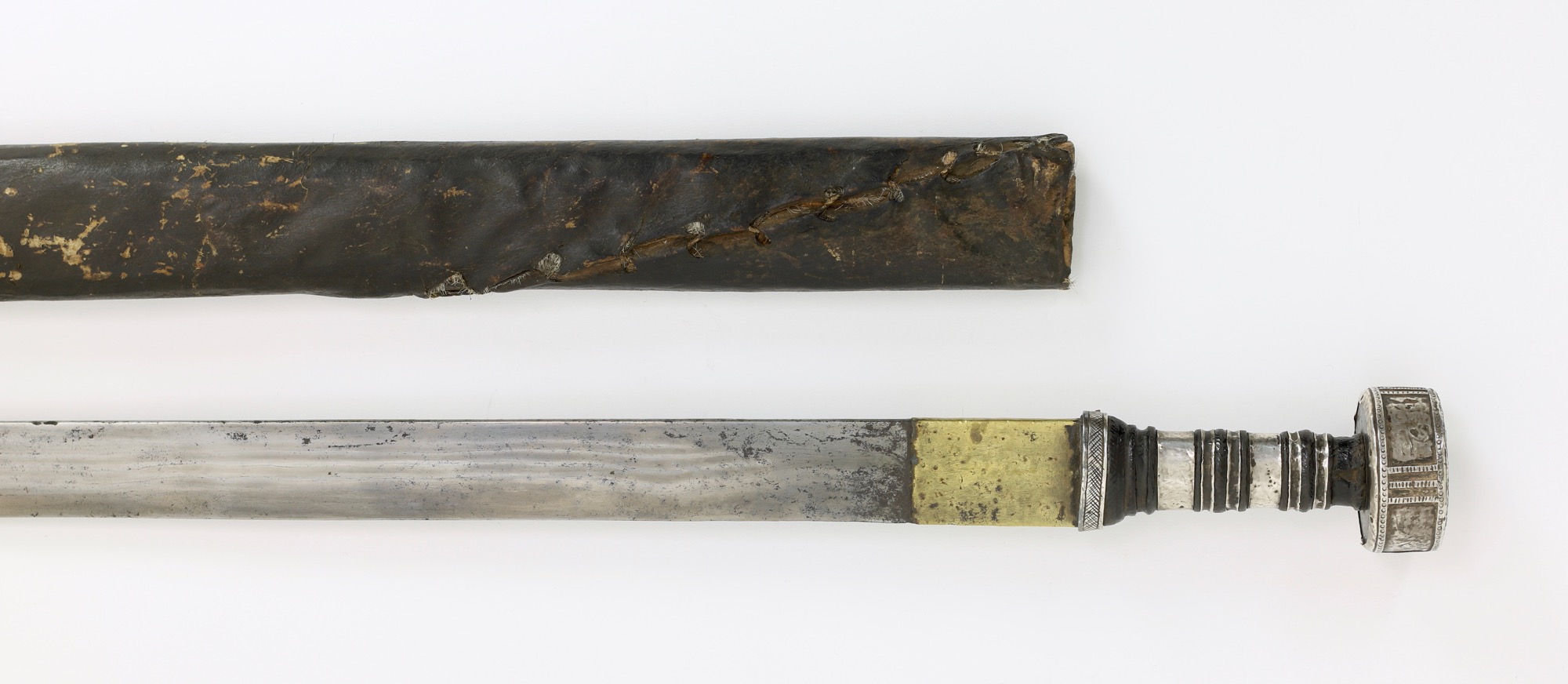

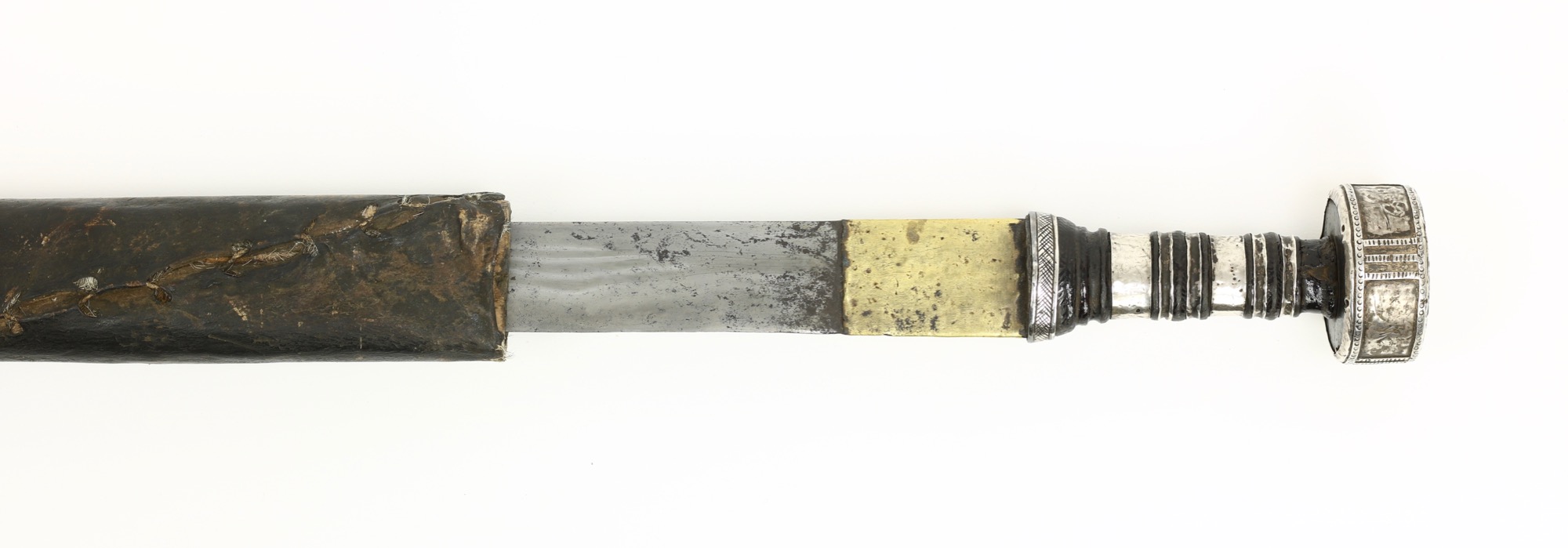

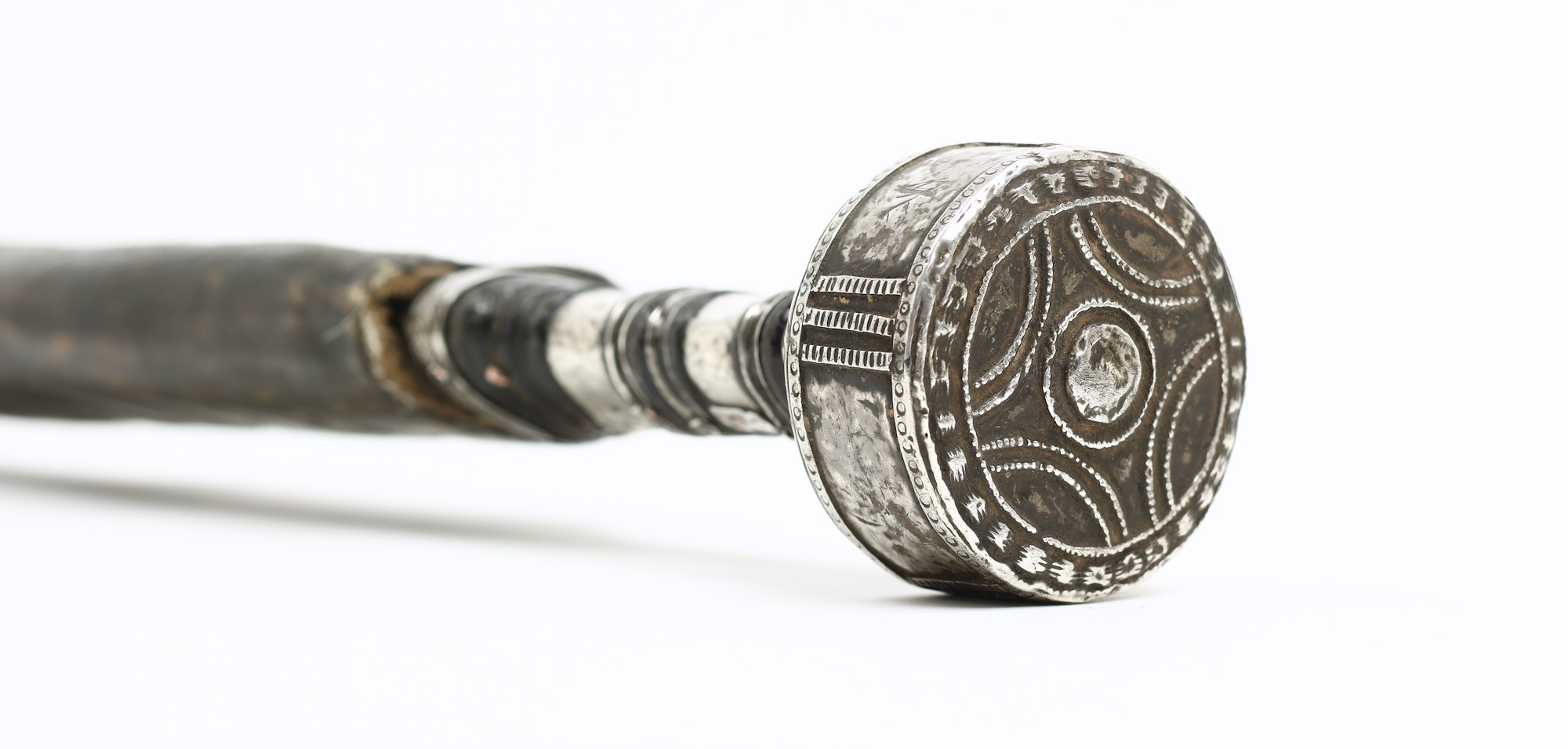
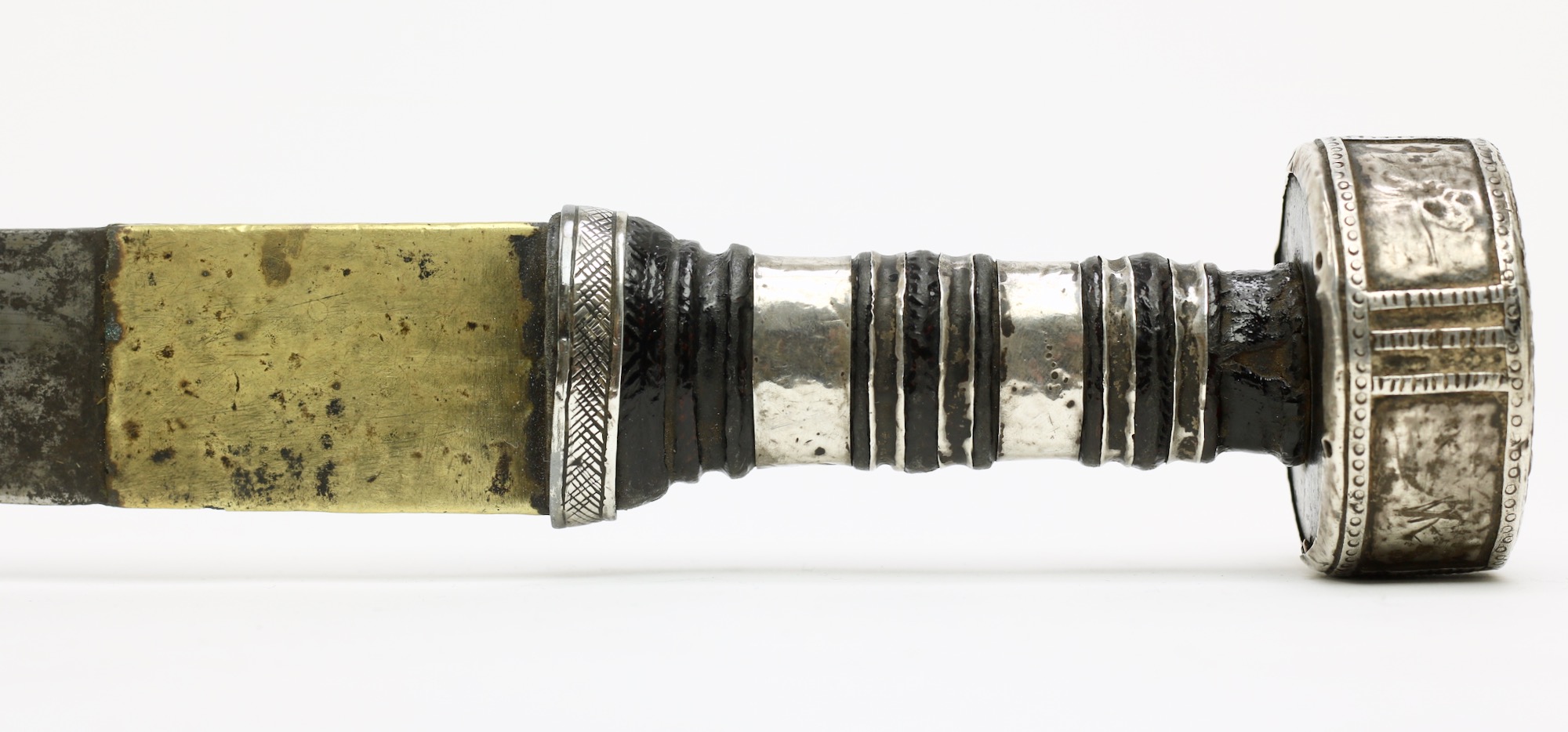
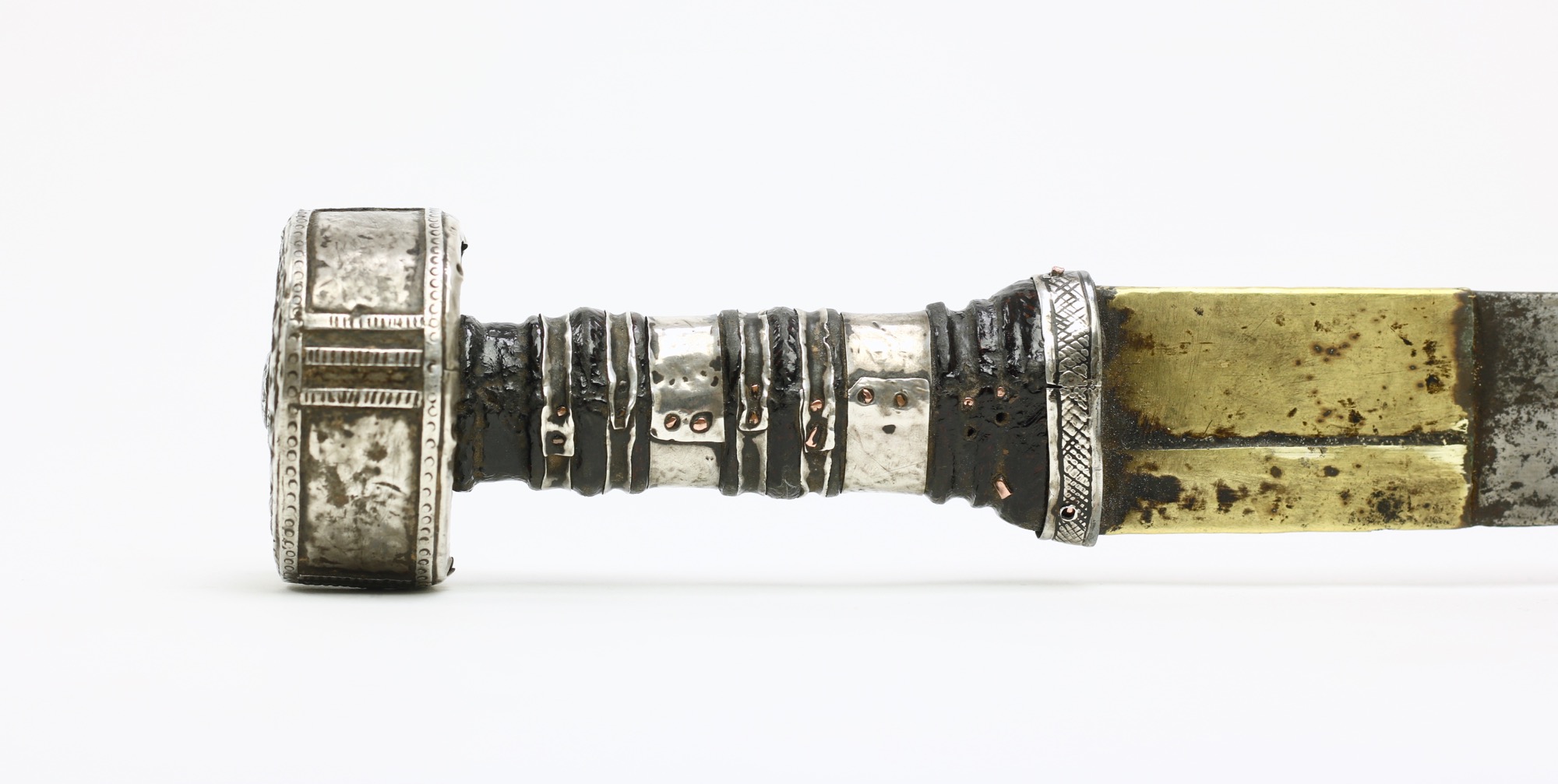

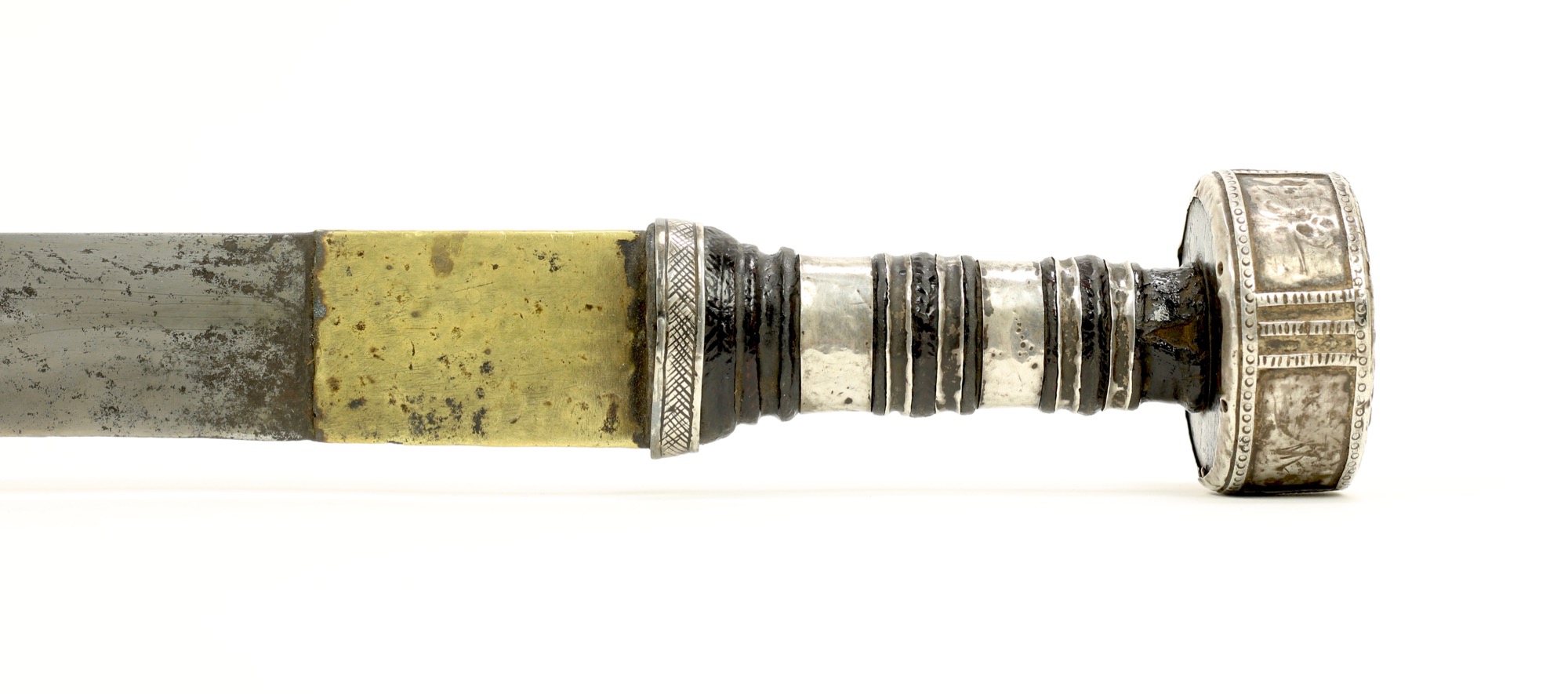
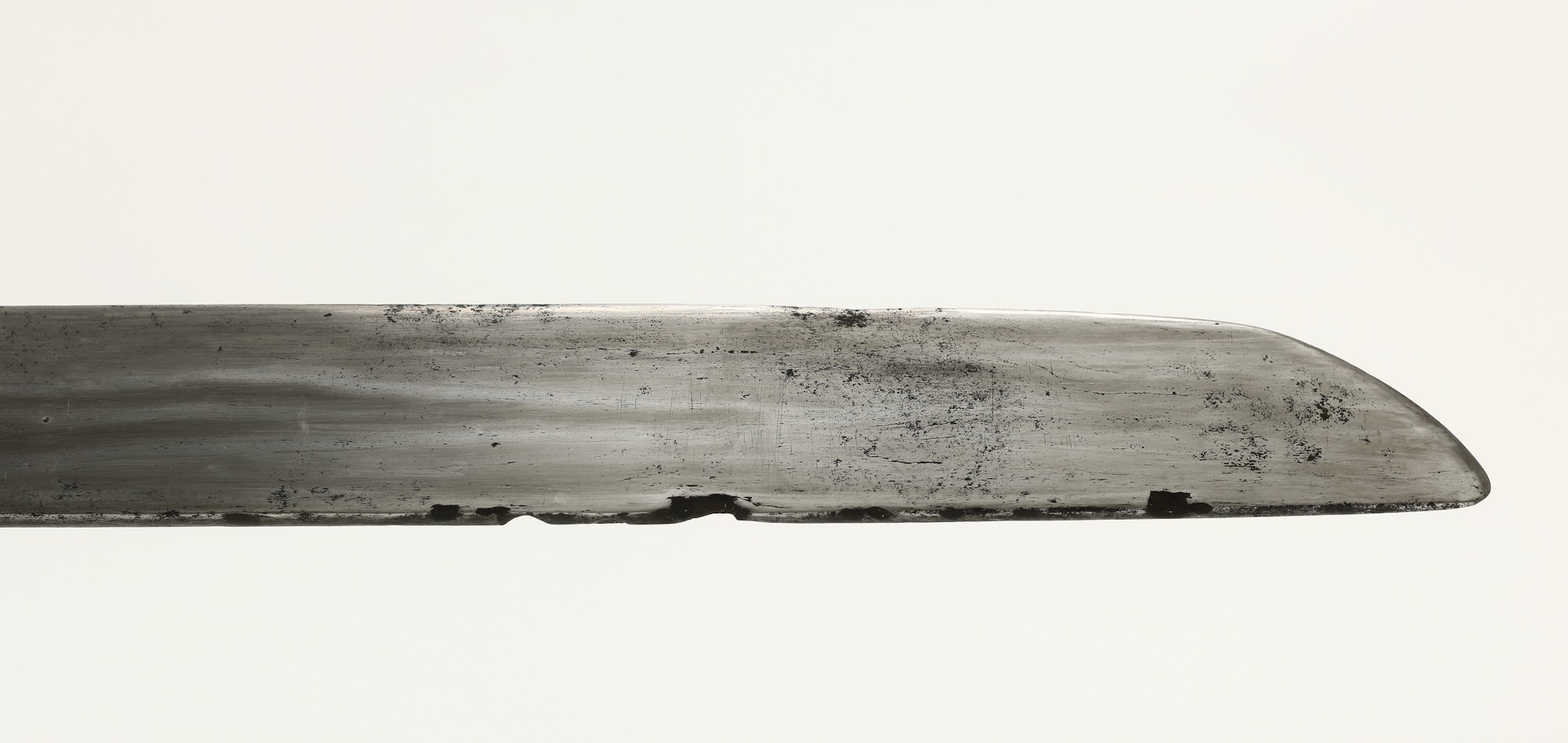


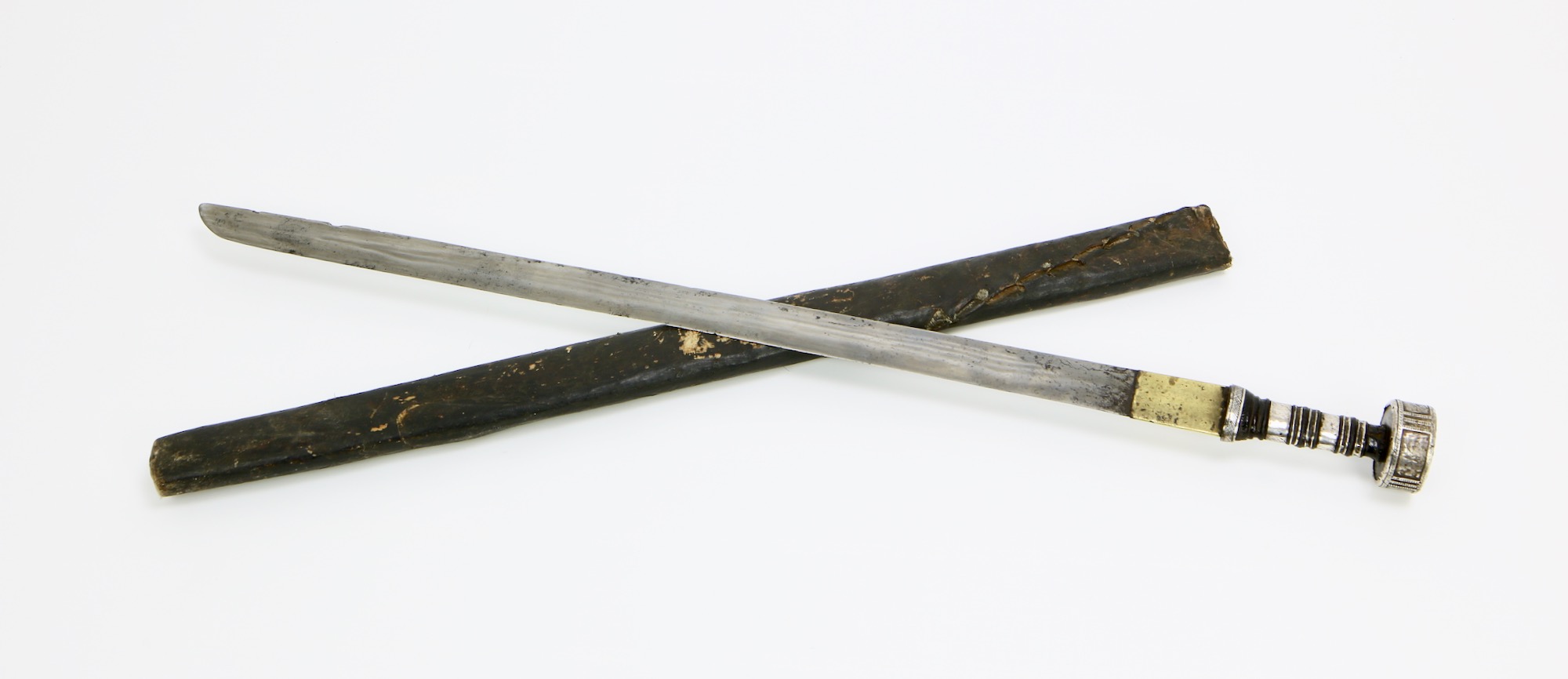
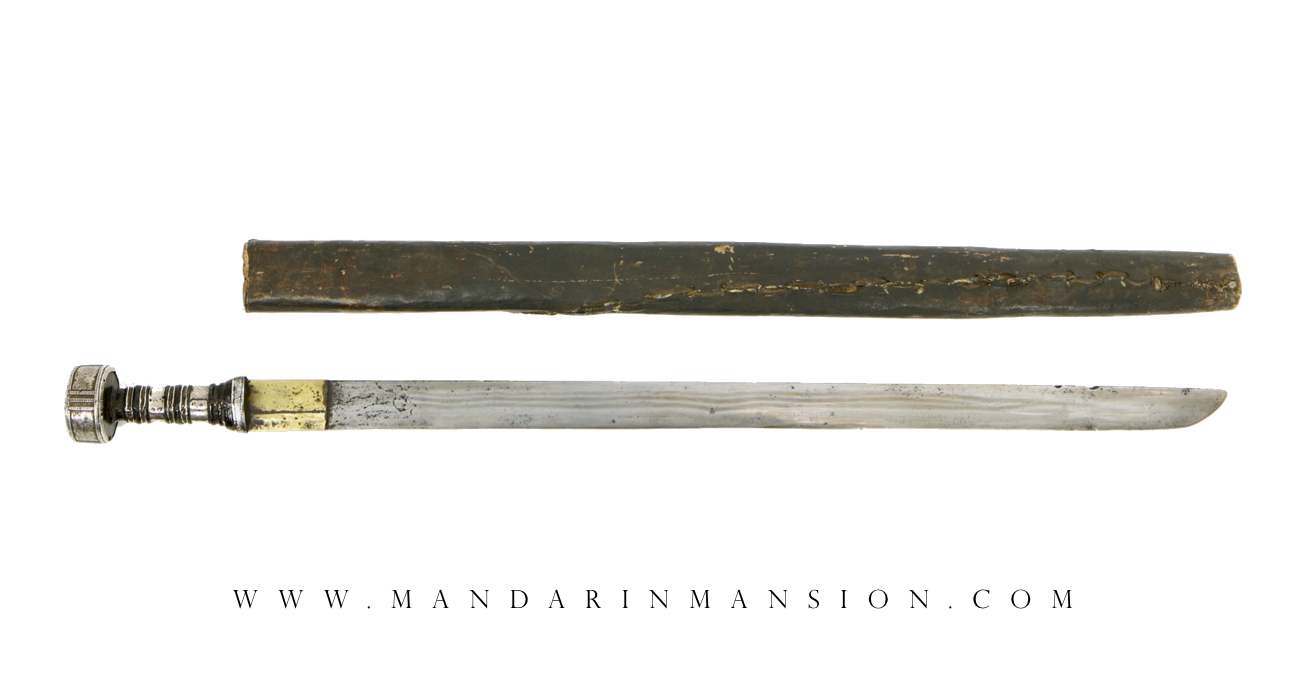
With a very fine Nepalese blade, but kard-like hilt and scabbard.
Early type with very shallow notch in the blade and little flare in the pommel.
20th century military khukurī with many different tools in its back pocket.




